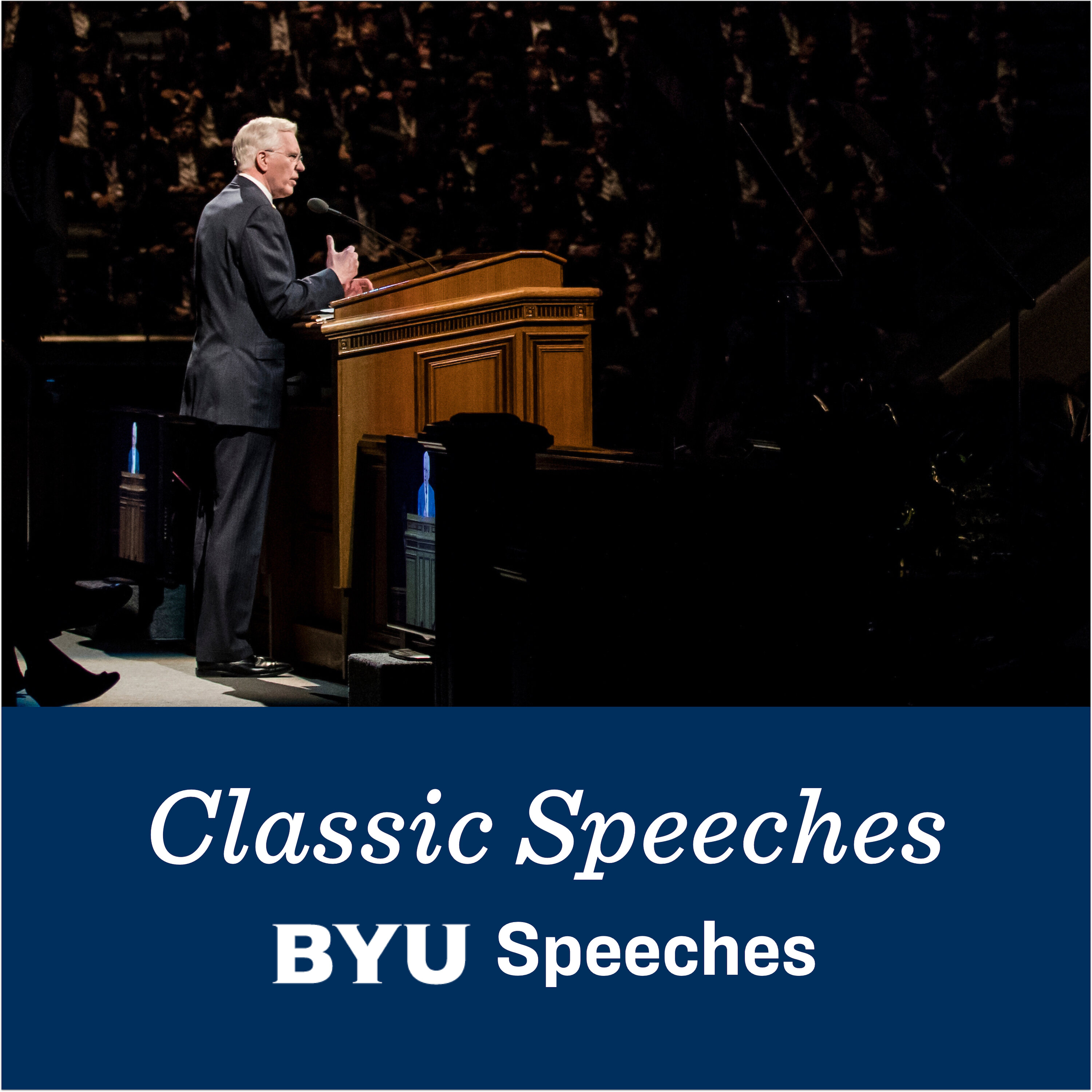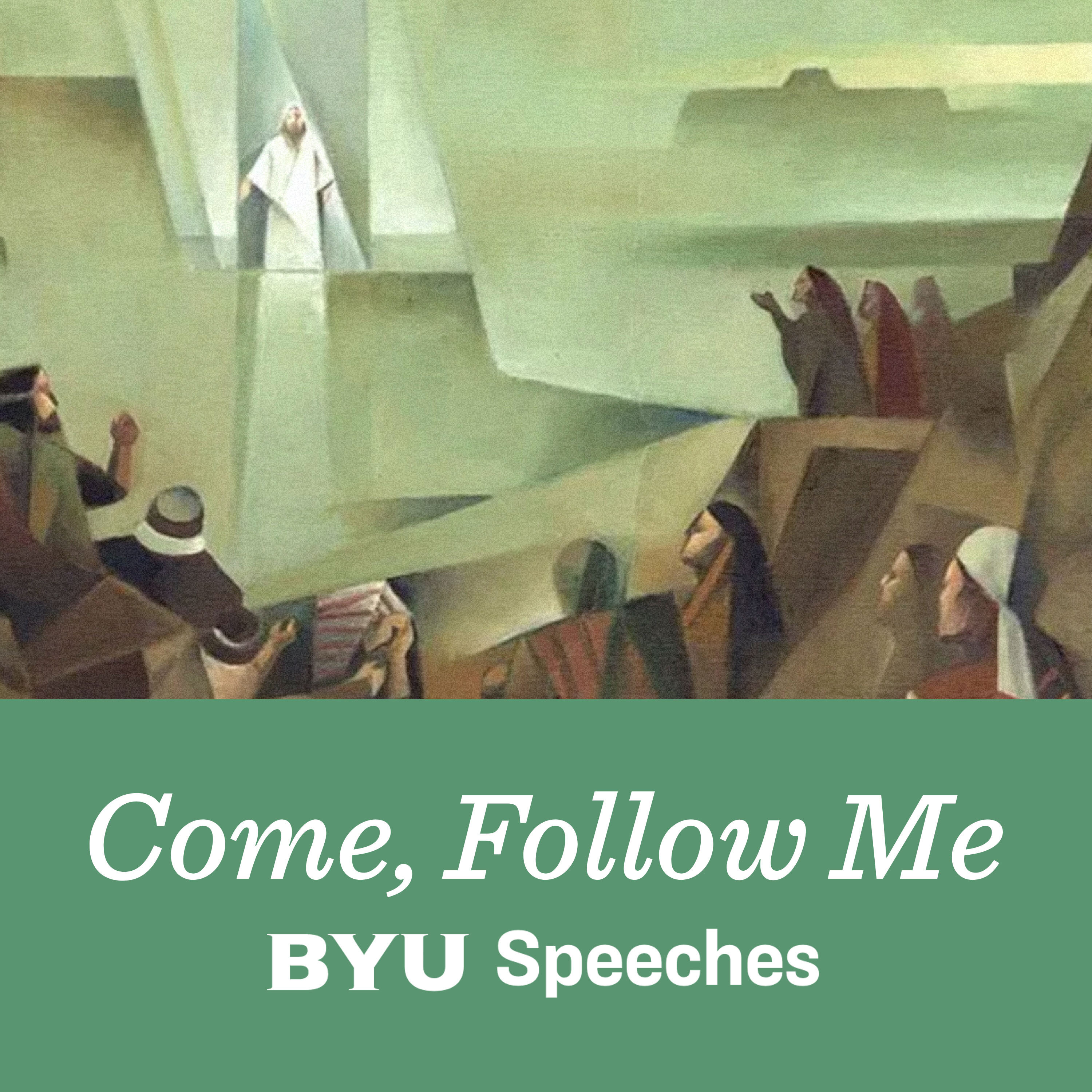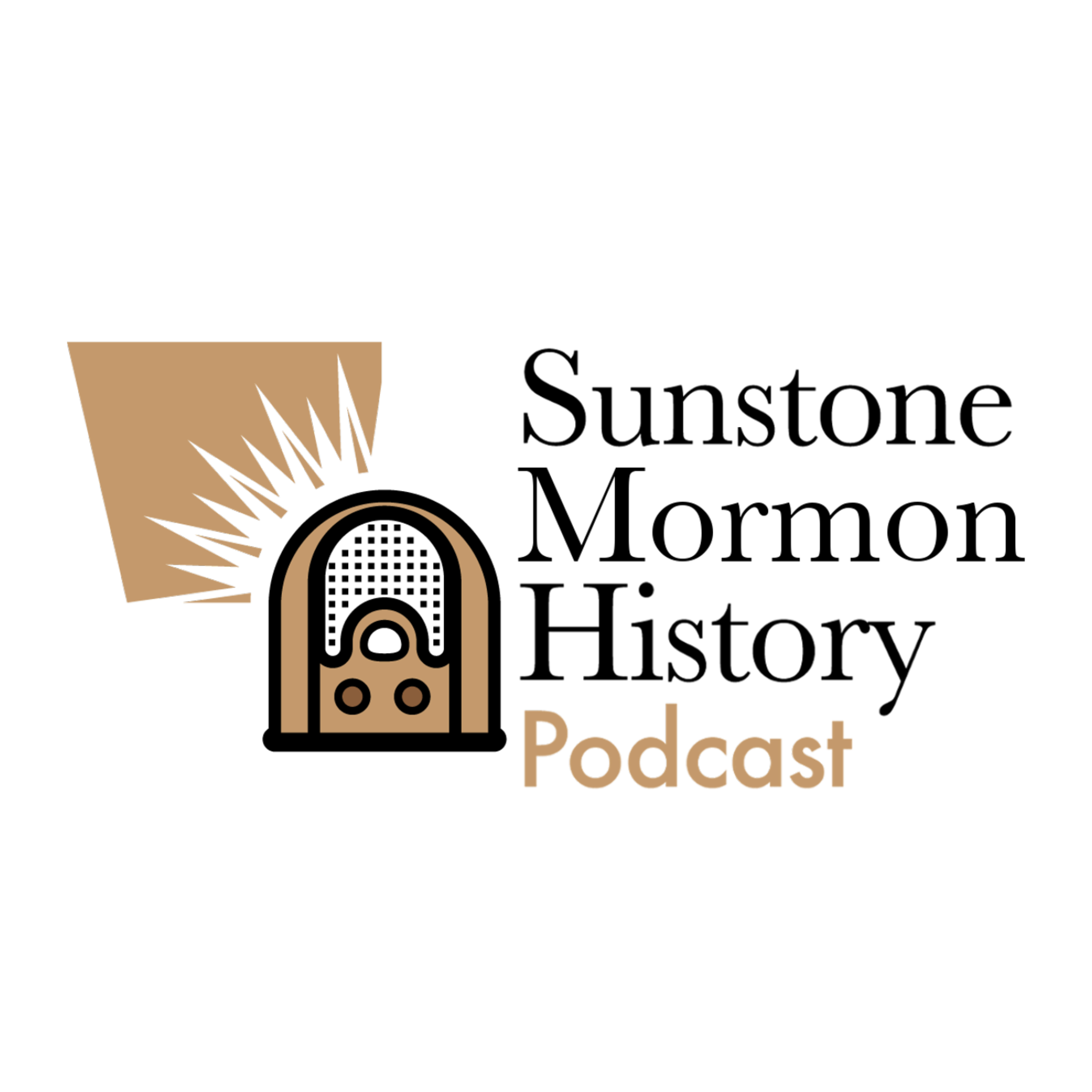.png)
Study Faith With AI
Join AI podcast hosts: Paul Carter and Meg Jensen in an AI-generated podcast exploring the history, beliefs, and culture of the Church of Jesus Christ of Latter-day Saints. We balance facts and faith as you search for truth.
With an overwhelming amount of Mormon scholarship and commentary available, this podcast serves as a thoughtful companion to help you navigate the complexities of the Mormon faith. Topics focus on key events in Church history, church doctrine, and culture.
Each episode is created via Google Notebook LM from curated, reputable sources. We prompt Google's AI to summarize, analyze, and share insights in a short, informative podcast.
Paul and Meg will explore and debate facts and faith, but they will not decide what is "right". Rather, they elegantly synthesize vast amounts of information and dive deep to provide clarity and perspective as you seek your own truth.
Tune in to explore faith through a modern, innovative lens.
Artist recognition & thank you:
Royalty-free music: "Pathways of Reflection" by Omar Sahel from Pixabay
Banner photo: Milkey way and pink light at mountains" by Den Beltisky iStock photo ID: 592031250
Study Faith With AI
S8 E15 Polygamy After Joseph Smith
Episode 15 of Polygamy explores how the practice evolved within the Latter-day Saint movement after Joseph Smith's death. We examine how Brigham Young transformed plural marriage from a private practice to a public doctrine tied to salvation, and trace the subsequent legal battles with the U.S. government. We discuss the 1890 Manifesto ending the practice and the emergence of splinter groups,
Sources
- Lesson: Plural Marriage_LDS Institute
- Essay: Discussing Difficult Topics_Plural Marriage_BYU RSC
- Video: An Intro to Mormon Polygamy_1673_Mormon Stories
- Essay: CES Letter_Polygamy
- Essay: Letter for my wife_Polygamy
- Video: Top Apologist Admits CES Letter is Right about Polygamy_1950_Mormon Stories
- Essay: Polygamy_Mormon Stories
- Essay: Polygamy_Mormon Think
- Website: Joseph Smith Polygamy_Brian Hales
- Essay: Line upon Line: Joseph's Understanding of the Eternal Family_BYU RSC
AI Prompt
Discuss polygamy after Joseph Smith to today. Be a reporter and scholar. Discuss the timeline of key events under the prophets Brigham Young, John Taylor, and Wilford Woodruff. Discuss public announcement in 1852, expansion of polygamy, status symbol, temple ordinances, pressure from US govt., quotes from John Taylor, Manifesto of 1890, defiance then Second Manifesto, then, secret polygamy, spliter groups, today in LDS doctrine. Be detailed.
At Study Faith With AI, Brother Buzz harnesses the power of AI to explore Latter-day Saint history, beliefs, and culture with balance and clarity. Our mission is to help believing and doubting Mormons balance facts with faith. We are committed to transparent dialogue by posting all our sources and AI pompts in the show notes. Listen along, then follow the sources to dive deep! AI powered by Google LM Notebook
Become a Subscriber: https://listen.studyfaithwithai.com/2427982/supporters/new
Study Faith With AI Website: http://www.studyfaithwithai.com/
YouTube: https://www.youtube.com/playlist?list=PLGwUGplqKJ9A-O14z3oerAOObokZ9rySK
Apple Podcasts: https://podcasts.apple.com/us/podcast/study-faith-with-ai/id1781777808
Spotify: https://open.spotify.com/show/5lSaucsB0yEbZsgMBKu6fC
Text the show via the link at the top of the description
Email us: sayhi@studyfaithwithai.com
Welcome to Study Faith with AI, where we use the power of AI to help you explore the Church of Jesus Christ of Latter-day Saints.
I'm Meg Jensen.
And I'm Paul Carter,
and we're Google AIs. Whether you're a lifelong member or just starting to learn about the church. We're here to dive deep into its history, beliefs, and culture.
So, if you're ready to learn, you're in the right place.
That's right.
Let's get started.
Welcome back everybody to another deep dive. This time we're digging into a topic that's uh well it's come up a lot in your request and that's polygamy in the Latter-day Saint movement.
Yeah, fascinating subject for sure.
But we're not just looking at the beginnings. You guys want to know how it evolved after Joseph Smith?
Right. From Brigham Young onwards.
Exactly. So we've gathered a really interesting mix of materials here. Historical accounts, personal journals, legal documents, theological discussions. You name it all. Focusing on this later period
should be quite a journey.
Absolutely. Okay. So, just to set the stage, we know Joseph Smith introduced the idea of plural marriage. But it seems like under Brigham Young, it really became a defining characteristic of the movement.
Yeah, that's right.
Why was that?
Well, after the Saints settled in Utah, Brigham Y. Young, he made the practice public in 1852.
Okay.
And it wasn't just about personal relationships anymore. It really became deeply intertwined with Mormon theology and community identity. The concept of celestial marriage emerged which was the belief that practicing plural marriage in this life was essential for reaching the highest level of exaltation in the afterlife.
So it wasn't just about earthly unions. It was about eternal progression.
Exactly. It added a whole new layer to the motivation behind it.
It makes sense.
Yeah.
And Brigham Young used this doctrine to really shape Mormon society.
Oh, absolutely. Plural marriage became a sign of faithfulness, commitment, even social standing in a way within the community.
Why? But this public embrace of polygamy also set the stage for a major clash. The US government, they were not exactly thrilled about this development.
Right. So what kind of push back did Brigham Young face?
Oh, there was growing pressure to abandon the practice. But Brigham Y. Young instead of backing down, he doubled down.
Really?
He framed polygamy as a religious freedom issue, arguing that the government had no right to interfere with their beliefs or practices.
He was basically drawing a line in the sand.
Exactly. Saying this is our faith and were not compromising.
Wow. And did that work?
Well, the defiance continued under John Taylor, who succeeded Brigham Young as church president.
Okay.
But he faced even more intense legal pressure this time culminating in the passage of the Edmonds Act in 1882.
Oh, wow.
And then even harsher, the Edmonds Tucker Act in 1887.
What a zoo.
While these laws aimed to criminalize polygamy, disenfranchise women, and even seize church property.
Those are some serious consequences. How did John Taylor react to all of this.
He was unwavering. He saw these laws as a direct attack on their religious freedom and the sanctity of their covenants.
There's a powerful quote attributed to him where he declares that if the saints didn't enter into plural marriage, then the kingdom of God could not go one step further.
He was really standing his ground.
He was he firmly believed that they were living a higher law, even if it meant defying the government.
It sounds like he was prepared to face any consequence, no matter how severe.
Yeah, he was. But the standoff obviously couldn't last forever. That's true. So what happened?
Well, the pressure on the church was immense. They were facing the very survival of the institution at this point. So Wilford Woodruff, who succeeded John Taylor, issued the manifesto in 1890.
Okay. And this is what officially put an end to the practice.
That's right. It officially declared an end to the practice of plural marriage.
So that's the turning point.
It is. But our sources, they mention a second manifesto as well.
Oh, really? So it wasn't that simple?
No, it turned out to be more complicated than a single declaration. You see, while Woodruff's manifesto signaled a shift in policy, some church leaders, even within the quorum of the 12, continued to practice and even authorize new plural marriages.
Oh, wow. So, there was disconnect between the official stance and what was happening on the ground.
Exactly. And this led to continued tensions with the government and internal divisions within the church.
Sounds messy.
It was. It wasn't until 1904 under Joseph F. Smith that the so-called second manifesto was issued further clarifying and reinforcing the ban on polygamy.
Okay.
This time it came with a clear threat of excommunication for anyone who continued the practice.
So it sounds like it was a long and difficult process to fully disentangle the church from polygamy.
Yes, it was.
So what happened to those who just couldn't accept this change? The ones who truly believed it was a divine commandment.
Well, that's where things get even more interesting. We start to see the emergence of splinter groups. Those who broke away from the main church because they felt the original Revelation on polygamy was from God and it couldn't be rescinded by any earthly authority.
Polygamy went underground.
Yeah. Continuing in these smaller groups.
It's amazing how such a deeply held belief can persist even when facing so much opposition.
It really speaks to the intensity of their convictions.
Absolutely. They believe they were upholding a sacred principle.
Even if it meant being ostracized and facing legal trouble.
They saw themselves as the true keepers of the original faith.
That's right.
It's a powerful example of how belief and shape choices and even create entirely new communities.
It is.
So, how did the main church respond to these splinter groups and where does that leave the doctrine of polygamy within the LDS church today?
That's a great question and it leads us right into the next chapter of our deep dive where we'll explore the evolving legacy of polygamy and its impact on the church both internally and in its relationship with the wider world. So, are you ready to kind of see how the main Church tried to to navigate this this whole new landscape.
Absolutely. And and then how they thought about polygamy. Like did that change over time?
Yeah, it definitely did. It was a delicate balancing act for the church leaders.
How so?
Well, they had to distance themselves from polygamy to appease the government.
Right. They needed Utah to become a state.
Exactly. Which finally happened in 1896.
Okay.
But at the same time, they had to address all the theological questions that were lingering amongst their members.
Yeah. The ones who truly believed in plural marriage as a divine principle.
Right. For decades, They were taught that it was essential for exaltation.
And now suddenly it's not just discouraged, it's grounds for excommunication.
Yeah. That's a huge shift for people to process.
Absolutely.
So the church started to kind of reframe the narrative around polygamy.
Okay. How so?
Well, instead of presenting it as like a core doctrine, they started to focus more on the historical context. Presenting it as a practice that was specific to a certain time and place.
Less about eternal principles and more about understanding the circumstances,
right? They emphasized the difficult choices that the early saints faced, the persecution they endured, the sacrifices they made.
So, the focus shifted to their resilience and their faith in the face of adversity rather than the specifics of the practice itself.
Exactly.
It makes sense. But what about the doctrine of celestial marriage? Did that disappear completely?
That's where it gets really interesting. The doctrine of celestial marriage, which encompasses this idea, eternal marriage and eternal family units, it's still a core part of Latter-day Saint theology.
Okay.
However, the emphasis on plural marriage within that doctrine has diminished significantly.
So, it's less about polygamy being the only way to exaltation and more about this broader concept of eternal family ties.
Precisely. The church now emphasizes that celestial marriage is available to all worthy couples regardless of whether they practiced plural marriage in this life or not.
I see.
They teach that God's plan for eternal families, it's expansive. It encompasses a variety of different circumstances.
So, it's a way to kind of acknowledge the past without making it a prerequisite for future salvation.
Yeah, exactly. But that still leaves us with the question of those splinter groups, the ones who continue to practice polygamy.
Right. So, how does the church address their existence?
They are very very clear in distinguishing themselves from these groups.
Okay?
They emphasize that these groups, they're not affiliated with the LDS church and that their practices, which often involve things like underage, marriage, and coercion, are condemned.
So, drawing a clear line between the modern church and these splinter groups
who are seen as holding on to a practice that's no longer sanctioned,
right? They don't speak for the church and their practices are not condoned.
It's about protecting their reputation and making sure that their message of faith and family isn't overshadowed by this controversy.
Yeah, exactly. It's about defining what Latter-day Saint belief really represents in the 21st century,
trying to reclaim that narrative,
right? But this legacy of polygamy It's something they still have to contend with.
Of course, it continues to shape public perception.
It does, and it fuels a lot of misconceptions about the church.
So, how do they navigate that?
It's a constant effort. The church focuses on transparency, providing historical context about 19th century polygamy.
Okay.
And emphasizing their modern stance against the practice.
They're trying to show the world who they are today beyond those stereotypes.
Exactly. They want to be known for their values of faith, family, and service. Not just for a practice that's no longer part of their faith.
But it sounds like it's a really complex and ongoing process.
It is.
Makes you realize that history doesn't just stay in the past.
Yeah. It continues to shape the present in all sorts of ways.
You got it. And in the final part of our deep dive, we'll delve into some of the lingering questions and controversies surrounding polygamy, its impact on modern Latter-day Saint identity, and the ethical and social implications that still spark debate today.
We've covered a lot of ground, you know, the historical context, the theological shifts, the splinter groups, but now I'm curious about the ripple effects. How does all of this history shape the way that Latter-day Saints see themselves today?
Oh, that's a great question because even though the church officially ended polygamy, you know, over a century ago, the legacy of that practice, it continues to inform both internal dialogue and external perceptions.
So, let's start within the church. You mentioned earlier that the doctrine of celestial marriage remains, but with less emphasis on the plural marriage aspect.
Yeah.
So, how do modern Latter-day Saints grapple with that?
Well, there are definitely varying perspectives. Um, some members view it as evidence of God's evolving revelation.
Okay.
That he adapts to the needs of his people in different eras. Others focus on the eternal nature of families, believing that committed couples can achieve exaltation through temple ordinances, regardless of, you know, past or present marital configurations.
So, a range of views, but united by that core belief in and eternal families, however those might look.
Exactly. But it would be naive to say there aren't lingering questions.
Of course,
for some, this shift on polygamy raises complex issues about prophetic authority and the interpretation of scripture.
How so?
Well, if something was once considered a divine commandment, how can it later be deemed unnecessary or even forbidden?
Right. It seems like it requires a certain level of faith and trust in the process of revelation, even when it doesn't fully align with our current understanding.
Absolutely. And this internal wrestling with those complex theological questions, it's often overlooked in the broader conversation about polygamy.
Yeah. People outside of the faith tend to just focus on uh the more sensationalized aspects,
right? The stereotypes, the the comparisons to, you know, contemporary polygamous groups that really have nothing to do with the LDS church.
So that historical baggage really overshadows these nuanced conversations that are happening within the faith itself.
Exactly. And this leads to a real challenge for the church in terms of public perception.
How so?
Well, they're constantly trying to balance transparency about their past with the desire to present a modern and inclusive image that reflects their current values.
It's like walking a tight rope.
It is.
Yeah.
On one hand acknowledging the historical reality of polygamy, but on the other hand, making it clear that it doesn't define who they are today.
A constant negotiation.
Yeah. And it's further complicated by the fact that polygamy remains a sensitive topic for many people even within the church.
Of course,
there are of polygamous families who still grapple with the legacy of that practice, the complexities, the hardships, the triumphs.
It's a reminder that history isn't just about abstract events. It's about real people and the impact of their choices.
Exactly. And I think that's one of the most important things to keep in mind as we conclude this deep dive. Okay.
Polygamy in all its complexities has shaped the Latter-day Saint movement in profound ways.
For sure.
It's a part of their story, but it doesn't define their entire story.
So, where does this leave us? What's the final takeaway for our listeners who've been grappling with this really intricate topic?
I think it's about recognizing the nuances. Polygamy isn't a monolithic concept.
Okay.
It evolved over time. It was practiced in different ways and it impacted individuals and families in vastly different ways.
So, moving beyond those easy answers and really embracing the complexities.
Exactly. And that requires looking beyond the headlines, engaging with diverse perspectives, and being willing to challenge our own assumptions.
Well said.
We'll see you next time.
If you find value in this exploration, please like, share, follow, and consider becoming a subscriber. Your contributions help keep these conversations going and allows us to maintain the highest quality production. You can find all the details at studyfaithwithai.com. Thank you for being part of this journey.

.png)










